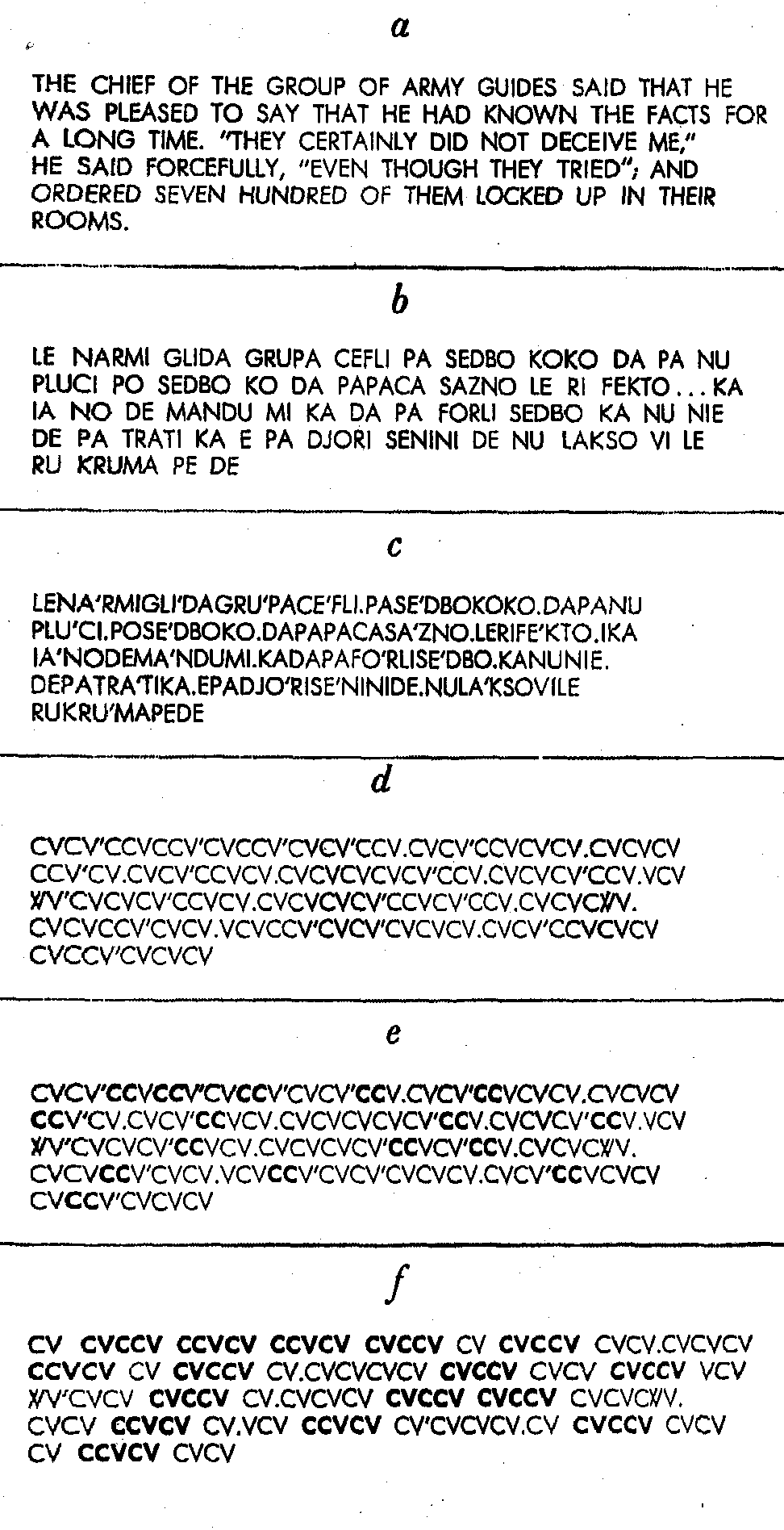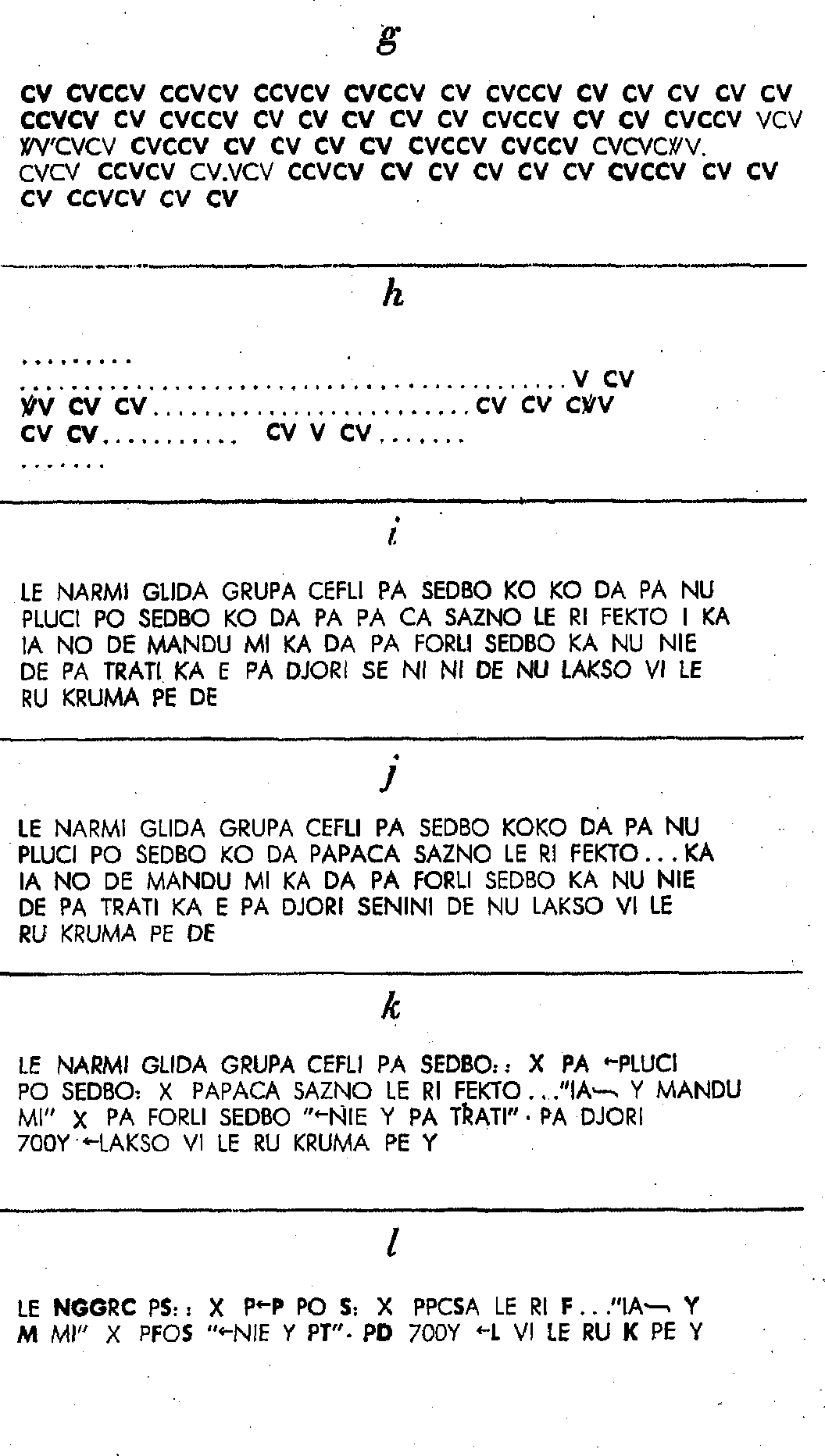Table 9:
resolving written loglan into a “speech stream”

WRITTEN AND SPOKEN LOGLAN may be resolved easily into each other and reduced to purely symbolic expression. In a at upper left is an English sentence constructed of words whose Loglan equivalents are shown in other tables. The passage is translated into written Loglan in b, and in c is transcribed as it might sound if read rapidly with word identity lost but with a natural pattern of stresses (') and pauses (.)..
The spoken transcript is then resolved in d into its consonant-vowel (cv) pattern, with stresses and pauses and the occurrence of semivowels (/v) noted; The adjacent consonants that identify predicates appear in boldface in e. Since pairs of consonants preceding a stressed vowel (ccv') always begin a predicate, and pairs of consonants that follow a stressed vowel (v'cc) always occur in the middle of a predicate, and since predicates have only limited numbers of phonemes, the predicates may be resolved as in f.

Most ol the unresolved sequences consist of consonant-vowel alternations; these can only be operators, and they are resolved in g.
The remainder of the passage is now easily resolved (h) into connectives (vowels preceded by a glottal stop, or .v), indicators (diphthongs, or /vv) and sentential operators (c/vv). With the spoken passage thus resolved into words, it is restored to full phonemic form (i), and the compound operators and full-stop are identified in j to restore the passage to original written form.
The punctuation may be carried a step further (k) with translation of the connectives and certain operators into their conventional signs as shown in the chart on opposite page. The passage may then be completely mathematized, with predicates reduced to abbreviations and most operators represented by signs, to expose its logical structure (l).